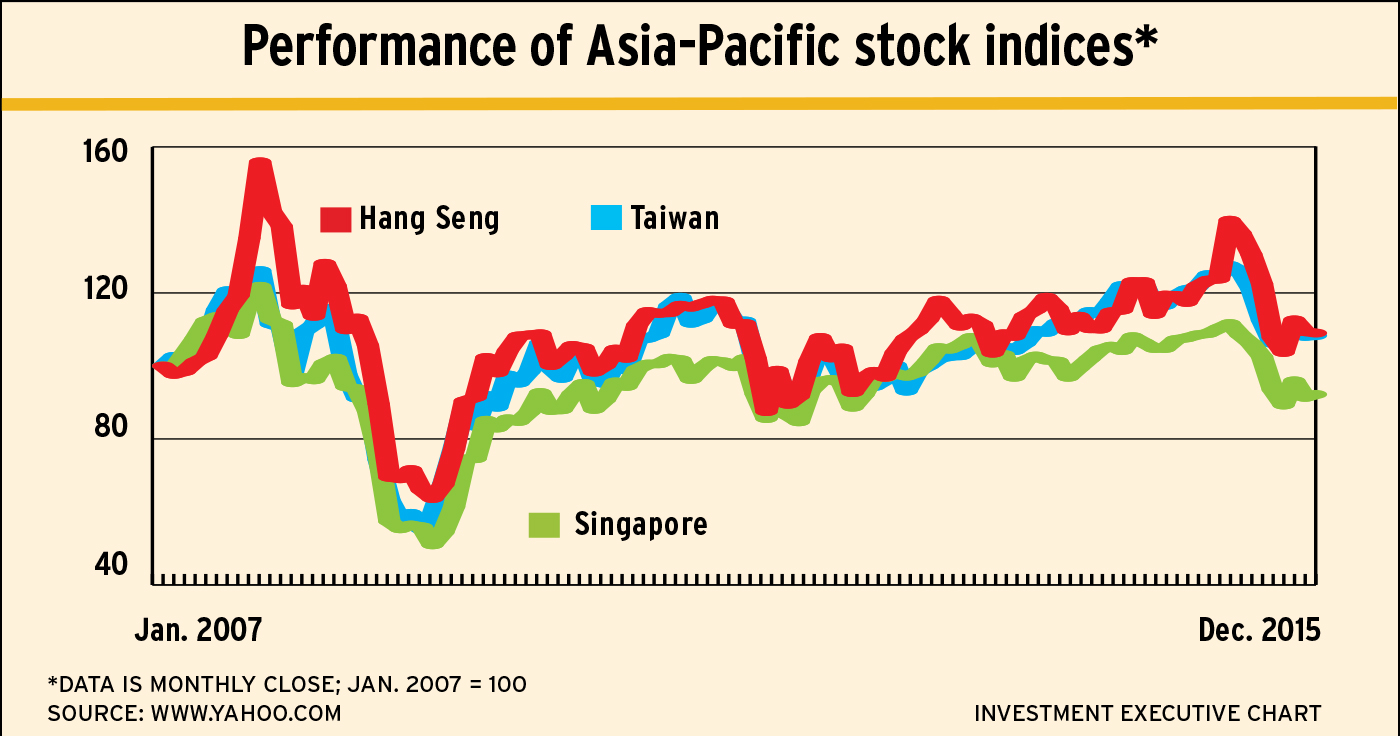
Asia’s economies are expected to move ahead at a healthy trot in 2016; while not a full gallop, the pace will beat much of the world.
The World Bank anticipates that economic growth for the Asia-Pacific region will be 6.4% in 2016, down from an estimated 6.5% for 2015. The region encompasses 14 nations, including China, Indonesia, Malaysia, the Philippines, Thailand and Vietnam.
The slightly slower pace reflects a continued slowdown in the rate of growth in China, the economic giant around which the smaller Asian economies revolve. Thus, economic growth in the region, excluding powerful China, is projected to be 5.4% in 2016, up from an estimated 4.9% in 2015, as Asia’s smaller economies benefit from strengthening global trade and developing domestic economies.
“Asia’s economies are becoming more market-driven, and it’s not just about exports,” says Robert Harrocks, chief investment officer (Asia), at Matthews International Capital Management LLC in San Francisco and portfolio manager of BMO Asian Growth and Income and BMO Asia Dividend funds, which are sponsored by Toronto-based BMO Global Asset Management Inc. “[These countries] are implementing quality controls and efficiency measures, more functional production lines and incentives for staff. New ideas are seeping through … they’re becoming more entrepreneurial and diversified.”
The Asia-Pacific region, a net oil importer, benefits from lower oil prices, although commodity-exporting countries such as Indonesia and Malaysia will suffer the effects of lower global prices for oil, gas, coal, palm oil and rubber.
“The slump in commodity prices is hurting commodity producers but helping importers, bifurcating the region into winners and losers,” says Christine Tan, senior portfolio manager at Excel Funds Management Inc. of Mississauga, Ont., who manages Excel Emerging Markets Fund.
Low energy prices, if sustained, will create a continuing boost for the Asia-Pacific region as a whole. The region remains vulnerable to both the economic slowdown in China and declining demand from other trading partners such as Japan or Europe. The World Bank estimates that a 1% decrease in China’s growth rate could reduce growth in the Asia-Pacific region by approximately 0.2 percentage points. The impact would vary across countries, with commodity exporters hit the hardest.
Further hikes in the U.S. dollar (US$)could attract capital investment away from the region and squeeze the availability of external financing, but Asia’s exports could be stimulated by local currency weakness.
Interregional trade barriers are being dismantled gradually and the region is becoming a common market with free flow of goods, services and labour. Global initiatives, such as the Trans-Pacific Partnership trade agreement, could see more production of goods such as textiles and electronics shift to countries such as Malaysia and Vietnam, due to their cost advantages in selling to markets such as the U.S. and Japan.
Vietnam is one of the bright spots in the region, with real gross domestic product expected to grow at more then 6% this year as many manufacturing firms move their production away from China, where skill levels and wage costs are rising, and to less expensive Vietnam.
Chuk Wong, vice president of 1832 Asset Management LP in Toronto and lead portfolio manager of Dynamic Far East Value Fund, likes Vietnam Dairy Products Corp., a beneficiary of rising consumer wealth.
Tan says the cosmetics industry has seen big growth, and she likes South Korea-based LG Household & Healthcare Ltd., which has a fast-growing and profitable cosmetics and body care division. LG owns “The Face Shop” retail chain of 930 stores.
Convenience stores are mushrooming in Korea, and riding the wave is Excel fund holding BGF Retail Co. Ltd. with its 9,000 franchised locations. Tan also likes Korea-based Coway Co. Ltd., a manufacturer of air and water purifiers that exports to China.
Tan is also likes firms expected to benefit from a stronger US$ and weaker domestic currency. In Taiwan, she likes textile firm Taiwan Paiho Co. Ltd., which derives a large portion of its revenue from sales in the U.S.
© 2016 Investment Executive. All rights reserved.